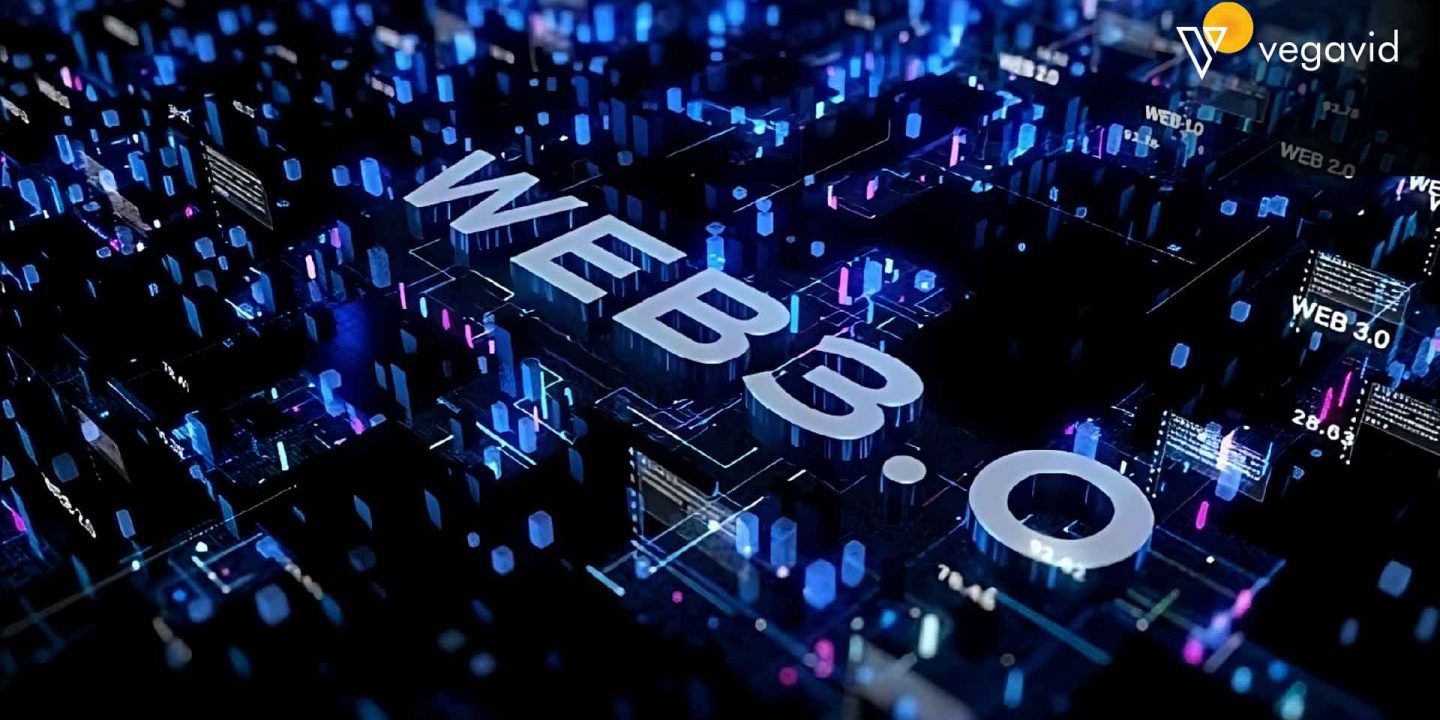
The rise of Web 3.0 technologies, including blockchain, decentralized networks, and smart contracts, is transforming supply chain management and logistics. Web 3.0 brings unprecedented transparency, security, and efficiency to supply chains by digitizing and decentralizing transactions, tracking provenance, and ensuring trust between parties. This article explores the promises of Web 3.0 for supply chains, from improved visibility and optimization to regulatory compliance.
What is web3 in supply chains and logistics?
Web 3.0, or web3, leverages blockchain technologies, including smart contracts, decentralized networks, and digital ledgers, to create transparent, secure, and automated supply chain management systems. In supply chains and logistics, web3 refers to using these blockchain-based solutions to digitize and decentralize transactions. It also enables provenance tracking and ensures trust between parties with no single point of failure.
Features of a web3 supply chain
Some of the most significant features of a web3 supply chain include:
- Immutability- Web3 uses blockchain to create permanent, transparent records of all supply chain transactions, events and conditions that cannot be altered or removed. Data immutability provides an auditable, tamper-proof provenance trail for assets with no single point of failure.
- Provenance tracking- Web3-enabled provenance tracking allows tracing the origin, location, and ownership history of goods, materials, components and commodities across complex supply networks. The provenance of products and their components can be verified quickly and accurately, improving transparency, trust and regulatory compliance.
- Decentralization- Web3 supply chains operate on decentralized networks instead of being controlled by centralized authorities. Governance, data access, and rule-setting permissions are distributed across the web, preventing single points of failure and censorship. Transparency is “by design”.
- Cryptography- Advanced cryptography techniques securely store and transmit data/transactions on web3 networks, ledgers and smart contracts. Only authorized parties can access and manipulate supply chain data/assets, maintaining integrity across decentralized systems.
- Smart contracts- Smart contracts automate essential supply chain procedures like payments, shipping notifications, inspections, trades and more based on predefined rules and conditions. Contracts reduce paperwork, ensure predictability and limit opportunities for error or fraud between trading partners.
- Cost efficiency- Web3 supply chains have the potential for significant cost savings through process streamlining, reduced overhead, and optimized resource allocation. Automation minimizes delays and inefficiencies, while provenance tracking reduces waste, fraud and rework.
- Scalability- Blockchain networks that web3 supply chains are built on can scale to billions of transactions per second. It creates massive numbers of trading partners and complex global supply networks. The technology supports growth without compromising security, transparency, or decentralization.
- Sustainability- Web3 enables advanced tracking and verification of supply chains’ environmental, social and governance metrics/credentials. It allows certifying and incentivizing sustainable practices, reducing “greenwashing”. It helps ensure regulatory compliance on carbon emissions, fair trade, and labor standards.
- Trust- Features like immutability, provenance tracking, cryptography, and decentralization combine to establish trust in web3 supply chain systems. Trustworthiness is “baked in” technologically, facilitating open collaboration and partner exchange.
How is web3 beneficial for supply chain and logistics?
Web3 brings substantial benefits to supply chains and logistics through its blockchain-based technologies. Some of the most significant benefits include:
- Improved visibility- Web3 enables unprecedented visibility into supply chain processes, transactions, locations/movements of goods and provenance of products/components. With permanent, transparent records and provenance tracking, the status and attributes of assets are visible at any point, facilitating oversight and trust.
- Optimized efficiency- Web3 can streamline supply chain management and reduce delays/inefficiencies through automation, smart contracts and cost savings. Fewer manual procedures minimize errors, while optimized resource allocation improves on-time delivery rates and reduces waste.
- Enhanced security- Cryptography and decentralized control prevent hacking, fraud, censorship and tampering with web3 supply chain data/transactions. Only authorized parties can access information and transact, establishing trust in the system and facilitating open collaboration.
- Improved trust- Features like immutability, provenance tracking, cryptography and decentralization establish unprecedented trust in web3 supply chain systems. Trustworthiness is ” built-in “, enabling transparent exchange between partners and incentivizing sustainable/ethical practices.
- Scalability- Web3 supply chains harness blockchain networks that can scale to billions of transactions per second and massive global networks of trading partners. The technology supports growth without compromising security, transparency or decentralization benefits.
- Regulatory compliance- Web3 enables transparent, verifiable reporting on environmental, social and governance metrics/credentials across supply chains. It facilitates certification and incentivization of sustainable practices while reducing “greenwashing”. Compliance with regulations is streamlined and auditable.
- Cost savings. Web3 supply chains have significant potential for cost optimization through process streamlining. It helps reduce overhead, more intelligent resource allocation, and minimizes fraud/waste. Automation decreases delays and inefficiencies, and benefits are passed down to customers or invested in further innovation.
- Sustainability. Advanced tracking and verification of sustainability metrics allow for incentivizing eco-friendly suppliers/practices, reducing carbon footprints, and ensuring ethical materials sourcing. Web3 makes supporting sustainable supply chain management easier for companies and consumers.
How do supply chains and logistics using web3 function?
Supply chains and logistics develop web3-enabled systems using blockchain networks, distributed ledgers, and smart contracts to digitize and decentralize critical processes. Some of the ways web3 is utilized include:
1. Cryptocurrency payments
Digital tokens or cryptocurrencies are used to automatically execute smart contract terms, facilitating secure, transparent payments between decentralized web3 networks. Tokens provide an efficient, low-friction mechanism for global exchange and remittances.
2. Commodity/asset tracking
Web3 ledgers track the location, specifications, ownership and other attributes of commodities, goods, equipment, properties and other assets with supply chain relevance. Real-time visibility and verification of assets improve oversight, maximize utilization, and prevents loss/fraud.
3. Certification and provenance
Web3 certifies and verifies environmental, social and governance attributes of products, suppliers and materials. Customers can review provenance, standards adherence and sustainability metrics with ease. It allows for incentivizing ethical practices and reducing “greenwashing”.
4. Regulatory compliance
Permanent, transparent records and verifiable reporting facilitate compliance with food safety, environmental, fair trade and other regulations. Compliance is auditable, lowering costs and ensuring accountability. Regulations can even be embedded and enforced through smart contracts.
5. Peer-to-peer exchange
Web3 networks allow producers, suppliers, shippers, carriers, buyers, and others to transact securely and transparently without intermediaries. It enables new direct-to-consumer sales channels and distribution partnerships that increase efficiency and lower costs.
How does web3 improve regulatory compliance and reporting in the supply chain and logistics space?
Web3 technologies facilitate regulatory compliance and transparent reporting across supply chains. Some of the critical ways web3 enhances compliance and reporting include:
1. Immutable records
Web3 ledgers create permanent, tamper-proof records of all supply chain transactions, events, conditions and attributes. Records cannot be altered or removed, providing an auditable provenance trail for compliance verification at any point. Regulators/auditors can efficiently review adherence to requirements.
2. Verifiable reporting
Web3 enables automatically generating transparent reports on key metrics, credentials, operations, and impacts for regulatory review. Reports are verifiable using the immutable ledger, establishing trust in the data. Reporting costs decrease while oversight increases.
3. Embedded rules and controls
Regulations and standards can be embedded directly into web3 smart contracts, networks and tokens to enforce compliance at a foundational, automated level. It minimizes non-compliant practices and penalties, limiting reputational damage and legal consequences.
4. Incentivization
Web3 allows incentivizing and certifying compliant business practices through discounted fees, verified credentials and sustainability scoring with critical stakeholders. It encourages a “race to the top” and pathways to continually improve compliance management.
5. Auditability
The permanent, transparent and verifiable nature of web3 ledgers facilitates efficient auditing of supply chain operations, transactions and impacts. Auditors can quickly review compliance, identify risks, and ensure standards are met without spending excessive time/cost. Issues are easier to detect and remediate.
Web 3.0 and the Future of Supply Chain
Web 3.0 technologies are transforming supply chain management and logistics. Blockchain, smart contracts, decentralized networks and other web3 solutions provide transparency, security, efficiency and trust at scale. They digitize and decentralize key processes to optimize operations, reduce waste, ensure compliance and facilitate global exchange between countless partners.
Web 3.0 brings visibility into the provenance, location, ownership and attributes of all goods, assets, materials, data, transactions, events and impacts across sprawling supply networks. Real-time visibility improves oversight while verifiability builds trust. Fraud and inefficiencies decrease, cost savings increase and sustainability are incentivized.
Smart contracts automate complex negotiations, agreements, transfers, payments and more between trading partners without intermediaries. Predictability is maximized, disputes are minimized, and global exchange is possible. Scalability supports growth to massive numbers of suppliers/shippers/carriers/buyers and volumes of transactions.
Regulations/standards can be embedded into web3 networks/tokens to enforce compliance transparent yet privacy-sensitively. Compliance is easier to achieve and verify, and reporting costs decrease while legal/reputational risks are mitigated. Sustainable practices are certified, incentivized and continually optimized.
New business models like direct-to-consumer sales channels, asset/commodity trading platforms, and verifiable provenance credentials are possible. Partnerships form/break apart fluidly based on trust and value, not sunk costs or legal constraints. Networks interoperate using common standards and tokens/currencies for exchange.
Conclusion
Web 3.0 is poised to revolutionize how supply chains and logistics are managed. Its decentralized and trustless architecture offers greater transparency, security, and efficiency, enabling businesses to streamline operations and reduce costs. The features of a Web 3.0 supply chain offer a range of benefits, including improved inventory management and faster transaction processing. Web 3.0 can improve regulatory compliance and supply chain and logistics reporting. It makes it easier for companies to comply with regulations and report data accurately. As we look to the future of supply chain and logistics, Web 3.0 offers exciting possibilities for businesses looking to stay ahead of the curve.











